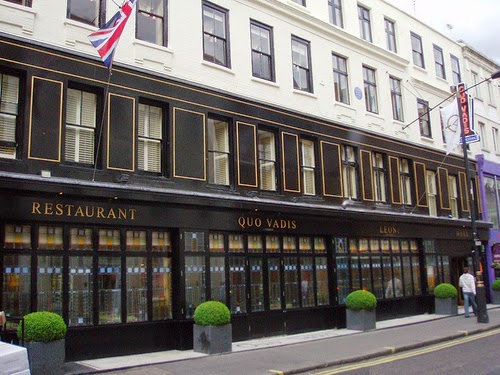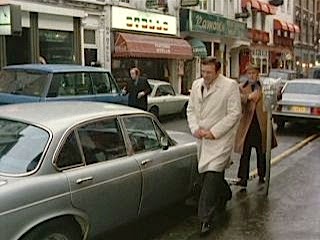In his Tatler and Bystander column ‘Standing By’ for May 6th 1953, which we found in the Jot 101  archive recently, journalist D. B. Wyndham Lewis declared:-
archive recently, journalist D. B. Wyndham Lewis declared:-
Soho died in 1886, somebody should whisper to a Sunday paper minx recently trying to lash herself into a colourful frenzy over “ London’s Montmartre “. Soho was killed and tossed on the refuse dumps at Barking Creek when they drove Shaftesbury Avenue bang through the heart of it, sweeping away all those shady, romantic little courts and by-ways, nooks and corners celebrated in the New Arabian Nights and elsewhere; not to speak of the fabulous little foreign restaurants of the legendary shilling banquets, vin compris.
Out of sympathy for an American friend who came over not long especially to buy cigars in the Rupert Street shop formerly kept by Mr Godden, tobacconist, alias Prince Florizel of Bohemia, playboy (ret.) we pointed out the most likely site in the western half of this uninviting street, but without much conviction. Another historic house on our friend’s list, the one in Denmark Street where the duped and furious Casanova shook Miss Genevieve Charpillon “ like a bundle of rags” ( see the Memoirs), was likewise drawn blank, together with a few ex-Embassies in Soho Square, and our friend was left marvelling at the mental processes of the L.L.C. and the capricious way it sticks up its blue memorial-plaques.
So we took him to County Hall to see—and hear—the L.C.C.
This clipping raises several points. Are we to take seriously the assertion that the ancient bricks and mortar that comprised part of old Soho demolished around 1884 – 6 to make way for the new thoroughfares of Shaftesbury Avenue, Charing Cross Road and Piccadilly Circus, ended up as building waste at Barking Creek ? It is possible, of course, that this material was deemed unsuitable for re-use and instead carried by barges down the Thames to the Creek. But surely it is much more likely that the brick was crushed and used on-site to provide a substratum for the new roads, or used as ballast for new foundations nearby. Or failing that, transported to other sites, for instance in West Hampstead or Cricklewood, for the same purpose. There couldn’t have been a vast amount of building waste in any case. Soho is not a large district of London and only a smallish section was demolished. Continue reading










